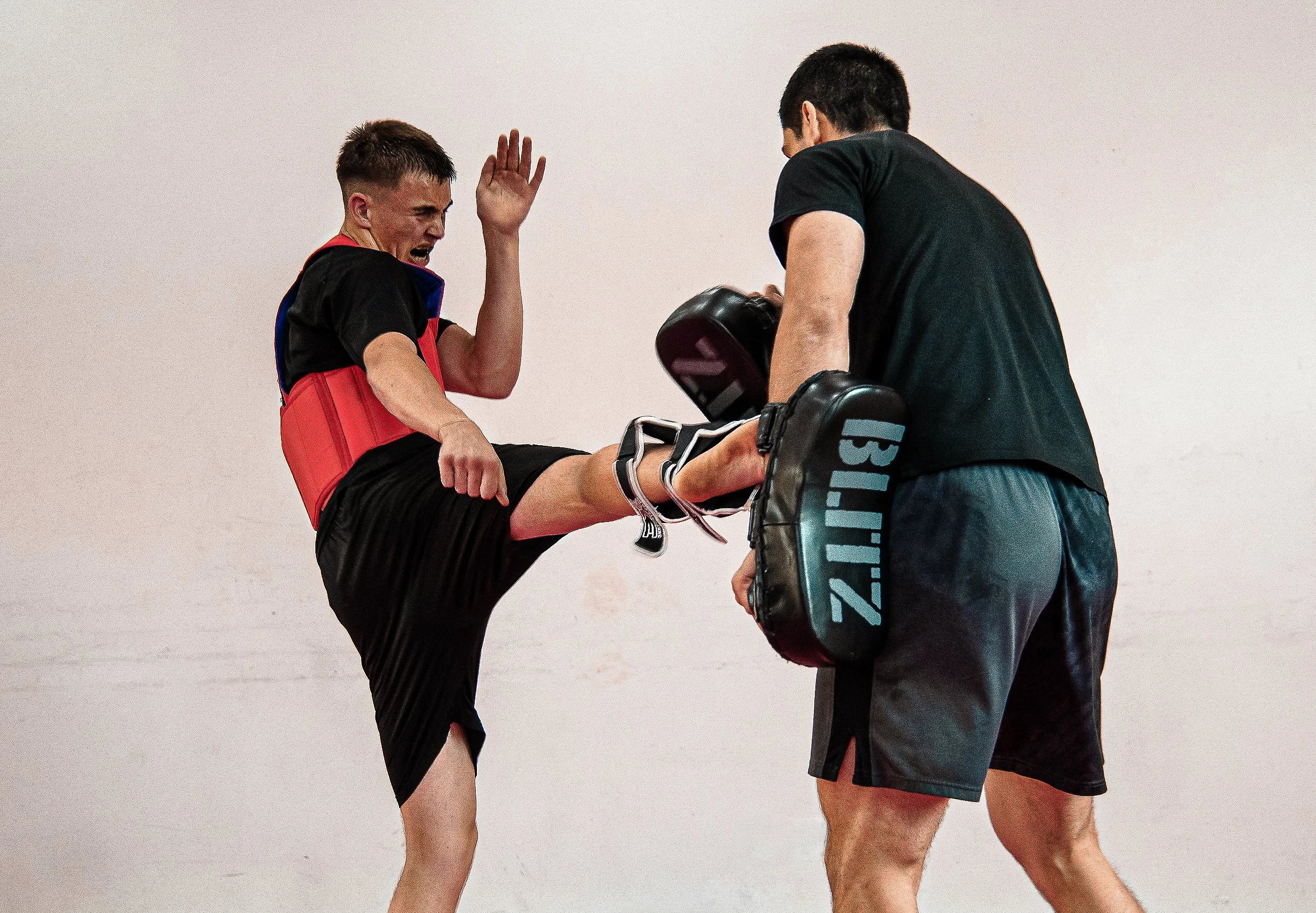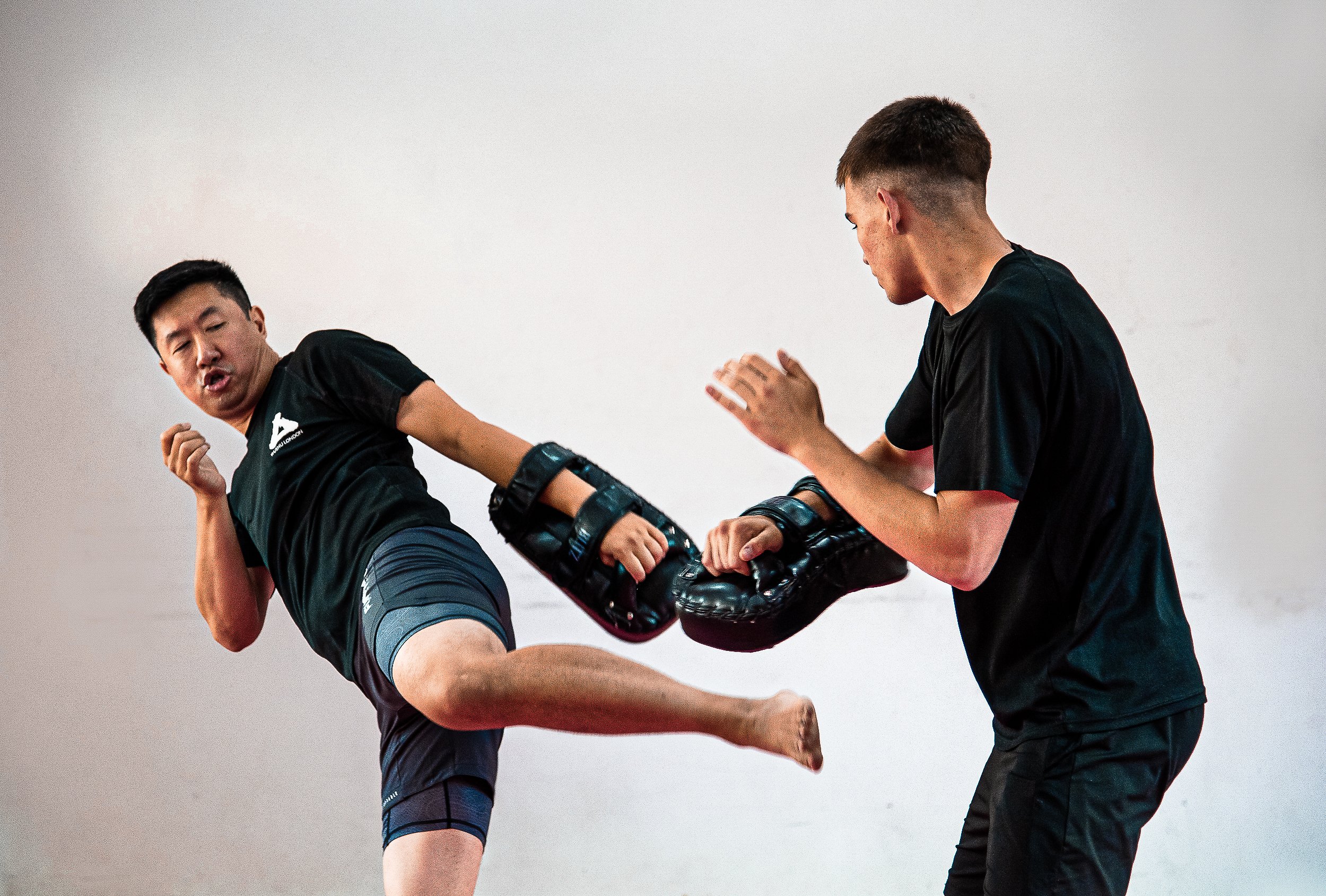Understanding the rules of Sanda
All combat sports have rules. These have a few functions; one is to keep the athletes safe; these include rules such as no eye gouging and groin strikes, they also give a set framework that an athlete can work within and give the combat sport it’s unique flavour.
Sanda is no exception, and, in this article, we will look at how the rules can help you develop strategies and tactics that can help you win your bouts as well as look at how these rules help develop you as a fighter.
How to Sanda is scored!
Strikes
In a Sanda bout there are 3 to 5 judges that score points based on where is hit on the body and how you perform a takedown. At the end of each round the judges will tally their points and you will get a winner of the round; Sanda rounds are best out of three.
The striking areas that score points in Sanda are the same as most kickboxing styles. These include the head, body, and legs above the knees.
All punches are Sanda kickboxing either to the body or head score 1 point, kicks to the legs are 1 point and kicks to the body and head are 2 points. In a Sanda match the judges will have to be able to see a clean powerful shot for the strike to be scored.
Throws
Sanda kickboxing is a unique style of kickboxing as it has a high emphasis on throws and wrestling. Some styles such as Muay Thai do have some sweeps but nowhere near the range that Sanda Kickboxing has.
You may be asking ‘how is this different to a combat sport such as MMA’? Well there is a rule in Sanda called the rule of three. This means that if there are more than three points of contact on the Lei Tai it counts as a throw. This means that if you shoot for a double leg your knee cannot touch the floor and if you are sprawled on you cannot bring your hands down these would count as throw. There is also no ground work like in BBJ in Sanda it is a purely standing fighting art.
A clean throw where you are standing, and your opponent is on the floor is worth 2 points if you both go down but your opponent lands first you score 1 point. The rule is that the first person to hit the ground loses the point.
The advantage of throwing is that every judge sees the takedown and will score it either one or two points while some may score a strike and others will not. This is why Sanda athletes will rely heavily on takedowns and throws.
The clinch
This is a rule I am not a fan of, you can only clinch for two seconds. You must be active in the clinch i.e. striking or attempting a throw, but you only have two seconds before the referee will break you. This means an athlete must be very fast in the clinch and throw within the two second of engaging in the clinch.
Finish them!
As in all combat sports there is a very quick way to end a fight, the knockout. If you can hit your opponent hard enough or do enough damage that they can no longer continue to fight you win the match.
There are a couple of other ways to win. An ultimate victory: this is where there is a 12-point difference on all the judges’ score cards. This will lead to an automatic victory. The other way to win the round quickly is to ring your opponent out twice in a round, so push them of the Lei Tai twice while you remain standing on the platform. This will only win you the round and not the entire match.
How the rules help your strategy
All combat sports have rules. These rules limit what an athlete can do as well as help shape their style of fighting. An athlete must work and develop strategies and tactics that both work within the rules and learn to use the rules to their advantage. This must be done with an experienced coach and within the context of the athletes chosen combat sport. If any athlete wishes to compete at the highest standard in any style of martial art they must learn how to use the rules of their given sport to their advantage.





